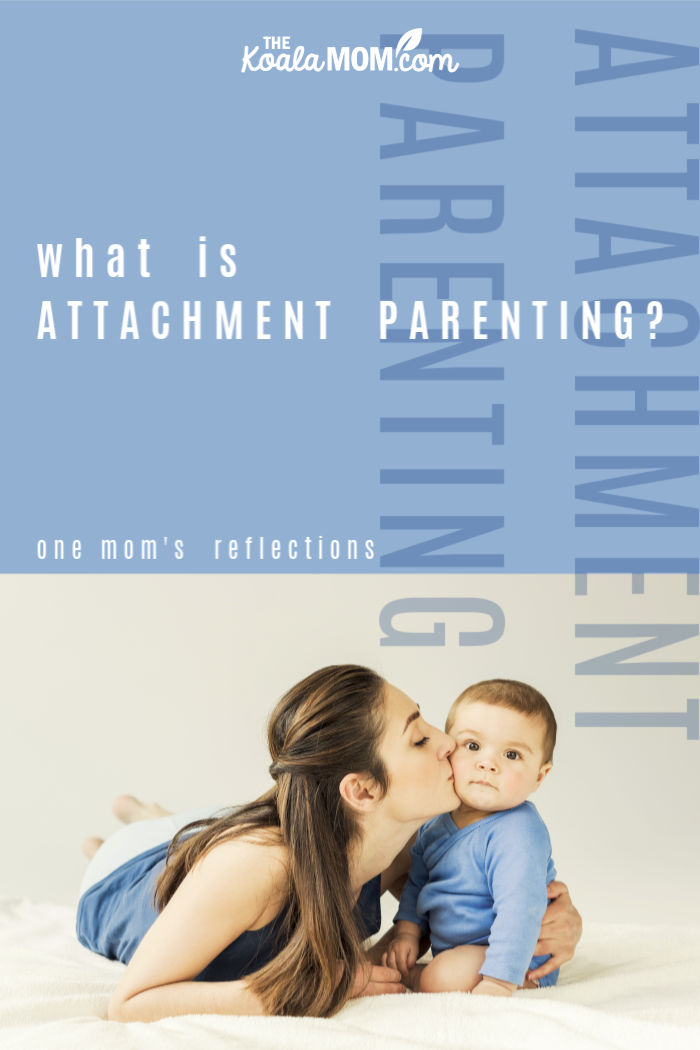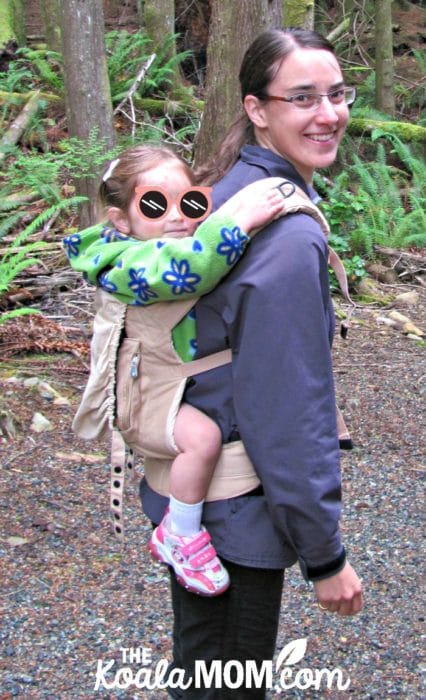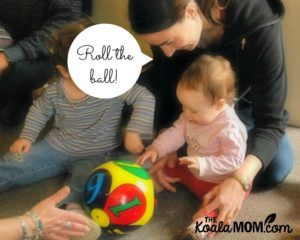My husband and I first heard about attachment parenting from Dr. Sears before Sunshine was born. This model of parenting promotes a close attachment between parents and babies. I like to think of it as “koala parenting,” as koalas always evoke images in my mind of a mom with her young joeys hanging off her back.

What Attachment Parenting Looks Like
Sunshine and Lily both like to be held. A lot. I’ve jokingly called both of them “mommy’s girls,” and they dislike it when I leave them. This is fine when I can be at home and they can be close to me, but at other times, it creates frustration for us. I’ve wished often they would be easier to put down for naps and happier playing by themselves for longer.
I didn’t plan to co-sleep (though the friends who got us into natural childbirth are also co-sleeping advocates), but Sunshine and Lily have had other ideas about that. Moving them out of our bed has been a slow process. Lily now usually sleeps the first part of the night in her cradle and then comes to our bed for the latter part of the night. I have to remind myself that they need me for this time in their lives and someday I will get a full night’s rest again.
Where Attachment Parenting Began
The phrase “attachment parenting” was coined by British psychologist John Bowlby. His research “showed that a secure attachment in infancy and early childhood ultimately allows people to become independent and form good relationships with others.” It makes sense to me that a baby who is held lots and sure of his mother’s love will be more secure and independent as he or she gets older.
That’s not to say clingy children aren’t held enough, but children also have unique needs and personalities. Attachment parenting can help a mother tune into those. It’s too easy for me to get focused on my to-do list (like the housework or my writing projects) and to tune out what my daughters need from me. Taking a few minutes to focus on them and respond to their needs usually alleviates the crying and the demands for attention.
Dr. Sears presents seven tools for attachment:
- Birth bonding
- Breastfeeding
- Babywearing
- Bedding (sleeping) close to baby
- Belief in the language of baby’s cry
- Beware of “baby trainers” (experts who recommend specific schedules without knowing your baby)
- Balance — meeting adults’ needs as well as children’s needs

These are tools, not rules, but so far, they have worked well for us. I’ve had the chance to bond with my babies immediately after birth, to breastfeed each of them past age one, to babywear frequently and to co-sleep. My husband and I agreed that we wouldn’t practice “cry-it-out” techniques, but would instead see baby’s cry as an attempt to communicate with us, and respond to that cry.
And, of course, there’s balance… even though the girls cling to me, there are times when hubby and I go out on a date or when he takes them so that I can get some work done kid-free.
While we appreciate the advice of experts like Dr. Sears and others, we don’t exclusively follow everything they teach, but rather discuss it and do what works. We believe that parents are the experts on their children, though they can seek input from trusted advisors (like grandparents or doctors).
Not All Kids Are the Same
Attachment parenting is not a one-size-fits-all-kids approach to parenting. My friend Julianne Harvey talks about the difference between her two kids—one who is more independent, one who needs more attachment: “Ava as a baby, toddler and child was independent in the extreme. She wasn’t cuddly or needy, preferring to do things on her own instead of being helped. I recognized this quality and respected it. I understood that mindset because I have it myself.”
However, her secondborn was different: “William needs help with everything, and clings to me in a way that has never been comfortable for my personality type. He is like a dog where Ava resembles a cat. I have felt smothered by his need for me; it was like an itchy wool blanket on a sweltering day, and I was desperate to get out from under it.”
Sunshine and Lily have personalities more like William, and I often feel like Julianne, smothered by their need for me. I want to be able to wash dishes without a toddler clinging to my leg, or to type a blog post without having to hold a baby on my lap at the same time. While I love the idea of attachment parenting (and all the warm fuzzies in thinking about keeping my kids close), the reality of this method of parenting sometimes makes me lose my cool.
Your Childhood Affects Your Parenting Style
I could also identify with Julianne’s thoughts about her childhood and how that has affected her parenting style. I think of myself as very independent, and lately my husband and I have had a few talks over my unwillingness to ask for help. I want him to recognize when I need help and come to my rescue without me having to ask.
As I pondered why that was, I thought of several instances growing up where I asked for help and received none. That taught me I had to do it myself, because I couldn’t rely on others to be there for me.

That in turn made me think about my parenting. I want Sunshine and Lily to be confident, independent women—but I also want them to know that I am there for them when they need me. At times, I am annoyed or frustrated by Sunshine’s requests—such as when she wants to change her shirt for the third time in a day. Sometimes she really needs help; other times, she just needs my encouragement that she can do it herself. I need to temper my impatience and remind myself that she’s learning and growing.
Parenting is tough, with so many decisions and questions. It’s nice to have the support of other moms, to know that they are also facing similar issues. And to know that despite how good—or bad—we are as parents, our kids will probably turn out pretty good anyways.
What does attachment parenting make you think about? What parenting style do you use?

2 Comments
Writer Mom – yeah, being a parent sure makes you understand your own parents better. 🙂 Introspection once in a while is good.
Hey, thanks for the shout-out! And don’t worry, I’m not at all offended by the idea that my son isn’t independent because he wasn’t held enough – it could very well be true! 🙂
I think it’s fascinating to look at our own childhoods and personality types when we are parenting. Anything that makes us self aware, makes us better parents. I believe that with all of my heart.
Great post…love the introspection and hope it helps you get through your day with the kids with just a little more patience and insight!